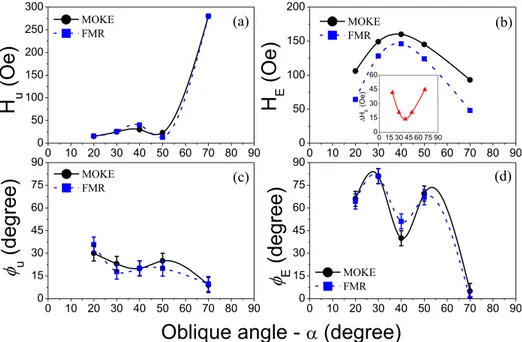Angular dependence of hysteresis shift in oblique deposited ferromagnetic/antiferromagnetic coupled bilayers
Texto completo
Figure



Documento similar
In the “big picture” perspective of the recent years that we have described in Brazil, Spain, Portugal and Puerto Rico there are some similarities and important differences,
In this part, we will concentrate on the magnetic properties of a single ferromagnetic particle, that is to say, we will study a magnetic nanoparticle without taking into account
In the previous sections we have shown how astronomical alignments and solar hierophanies – with a common interest in the solstices − were substantiated in the
The velocity of the earth's motion with respect to the rest frame of the O'K cosmic background radiation can be determined by measuring the anisotropy of the radiation.. Partridge
We show that using the field dependence of magnetocaloric effect, the order of the phase transition can be unambiguously determined using a quantitative criterion even for
As a result we present the temperature dependence of the electronic part of the heat capacity, the magnetic field dependence of the Sommerfeld coefficient, the temperature dependence
The study of the magnetization reversal processes as well as magnetic anisotropy of the films was performed by measuring simultaneously the in-plane vectorial-resolved hysteresis
The intrinsic magnetic properties in a permanent magnet are the Saturation magnetization, the Curie temperature and the Anisotropy field.. 1.1.3.1